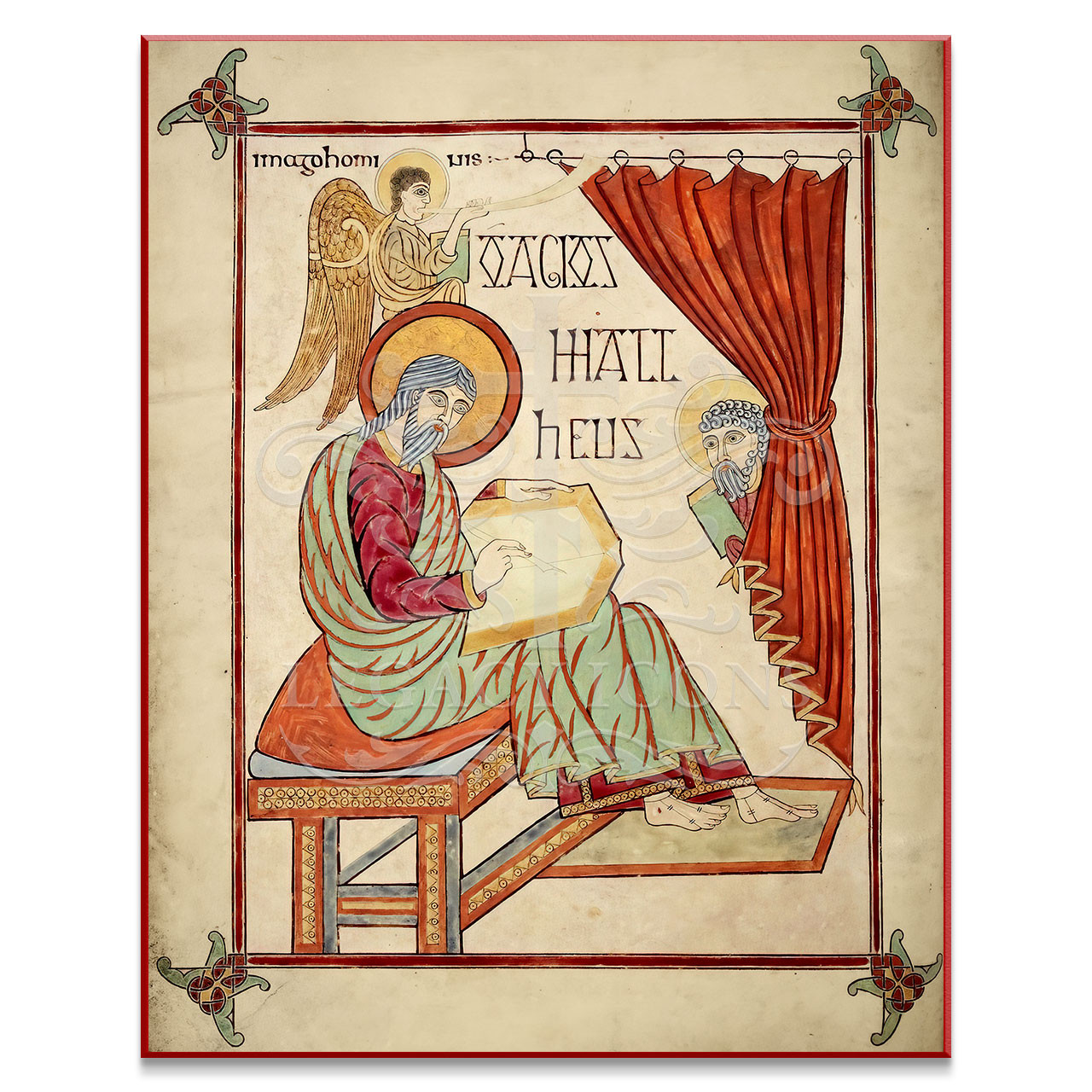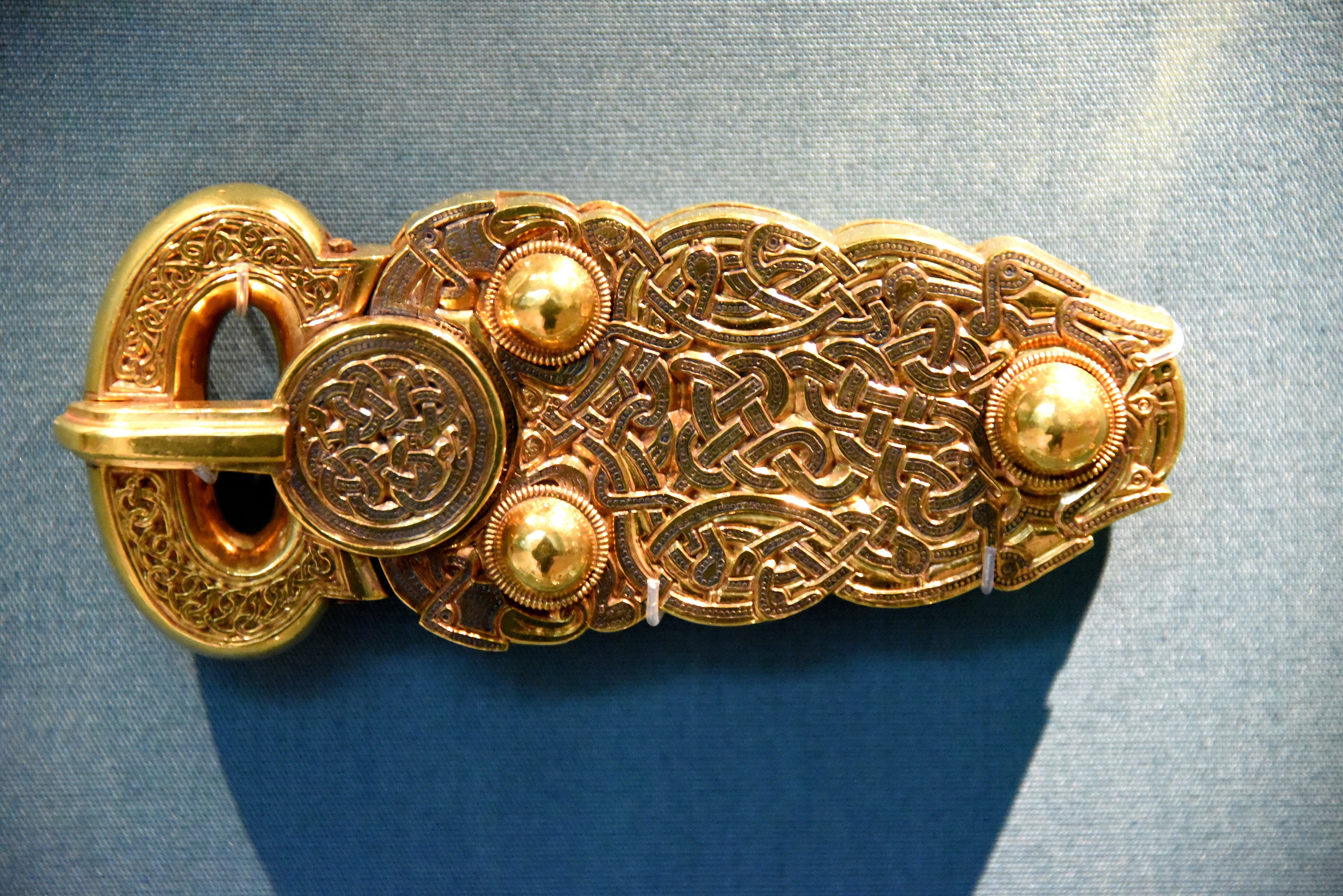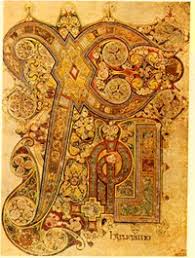Anglo Saxon & Hiberno Saxon Art Study Images
1/7
There's no tags or description
Looks like no tags are added yet.
Name | Mastery | Learn | Test | Matching | Spaced |
|---|
No study sessions yet.
8 Terms

John cross-carpet page, Lindisfarne Gospels, ca. 700. Tempera on vellum, 131/2 × 91/4″ (34.3 × 23.5 cm)
Flash Card: John Cross-Carpet Page, Lindisfarne Gospels
Artist: Unknown (probably Eadfrith, Bishop of Lindisfarne)
Date: c. 700
Medium: Tempera on vellum
Dimensions: 13 1/2" x 9 1/4" (34.3 x 23.5 cm)
Location: British Library, London
Key Features:
The John Cross-Carpet Page is one of the illuminated pages from the Lindisfarne Gospels, showcasing a complex geometric design featuring intricate interlacing patterns, and a cross at the center.
The design is a blend of Christian symbolism (the cross) with Celtic ornamentation, exemplifying the fusion of Anglo-Saxon and Christian art styles.
The use of bright colors and interlacing patterns creates a sense of movement and complexity, typical of Hiberno-Saxon art.
Significance:
The Lindisfarne Gospels are a masterpiece of early medieval illumination, reflecting the monastic culture of the time and the Christianization of Britain.
The cross-carpet page, in particular, demonstrates the fusion of Christian iconography with Celtic artistic traditions, marking a key development in the insular style of manuscript illumination.
Legacy:
The Lindisfarne Gospels remain one of the most important examples of Anglo-Saxon art, influencing subsequent illuminated manuscripts and contributing to the history of early medieval book art.

Saint Matthew, Lindisfarne Gospels, ca. 700, tempera on vellum, 131/2 × 91/4″ (34.3 × 23.5 cm)
Flash Card: Saint Matthew, Lindisfarne Gospels
Artist: Unknown (likely Eadfrith, Bishop of Lindisfarne)
Date: c. 700
Medium: Tempera on vellum
Dimensions: 13 1/2" x 9 1/4" (34.3 x 23.5 cm)
Location: British Library, London
Key Features:
This illumination depicts Saint Matthew, the evangelist, with a characteristic halo and stylized portrait that combines Christian symbolism with Celtic artistic traditions.
Saint Matthew is shown writing the gospel, emphasizing his role as a scribe, with intricate interlacing patterns and bold colors typical of the Hiberno-Saxon style.
The figure of Saint Matthew is framed by a decorative border and accompanied by ornamental elements that enhance the spiritual and symbolic nature of the manuscript.
Significance:
Part of the Lindisfarne Gospels, this illumination reflects the fusion of Christian iconography with Celtic artistic elements, demonstrating the early medieval period's focus on religious devotion through art.
The page highlights the importance of manuscript illumination in preserving and transmitting Christian texts in the early medieval period, particularly in the insular tradition.
Legacy:
The Lindisfarne Gospels are an important example of Anglo-Saxon manuscript art, influencing later Christian art and manuscript illumination throughout the medieval period.
4o mini

Gold buckle from the Sutton Hoo ship burial, first half of 7th century, gold, length 5 1/4″ (13.4 cm)
Flash Card: Gold Buckle from the Sutton Hoo Ship Burial
Date: First half of 7th century
Material: Gold
Dimensions: Length 5 1/4" (13.4 cm)
Location: British Museum, London
Key Features:
The buckle is made of gold, featuring intricate zoomorphic designs (animal motifs) and geometric patterns.
The decoration includes interlacing patterns, typical of Anglo-Saxon metalwork, and is often interpreted as reflecting both artistic skill and symbolic significance related to the culture’s beliefs and status.
It was part of a grave goods set found in the Sutton Hoo ship burial, one of the most significant archaeological discoveries from early Anglo-Saxon England.
Significance:
The buckle is a prime example of Anglo-Saxon craftsmanship, showcasing the luxury and wealth of the period, as well as the high level of metalworking skills.
The Sutton Hoo burial is believed to be that of a royal or noble figure, and the gold buckle underscores the elite status of the individual buried there.
Legacy:
This object is part of a larger collection from the Sutton Hoo site, which has provided key insights into early Anglo-Saxon society, including its trade, religion, and artistic achievements.
4o mini

Chi Rho Iota Page from the Book of Kells
Flash Card: Chi Rho Iota Page from the Book of Kells
Date: c. 800
Medium: Ink and pigments on vellum
Dimensions: 13" x 9 1/2" (33 x 24.1 cm)
Location: Trinity College Library, Dublin
Key Features:
The page features the Chi Rho Iota monogram, the first three letters of Christ in Greek (ΧΡΙ), beautifully decorated with intricate interlacing patterns, vibrant colors, and ornate flourishes.
Lively figures and animal motifs are integrated into the design, demonstrating the Hiberno-Saxon style of manuscript illumination.
The interlacing design and intricate detailing create a sense of movement, and the monogram itself is a symbolic representation of Christ as the central figure of the Gospel.
Significance:
The Book of Kells is one of the most famous examples of Insular art, a combination of Celtic, Anglo-Saxon, and Christian influences in manuscript illumination.
This Chi Rho Iota page marks the beginning of the Gospel of Matthew and is known for its intricate beauty, spiritual symbolism, and exquisite craftsmanship.
Legacy:
The Book of Kells is a pinnacle of medieval manuscript illumination, influencing both the artistic and religious traditions of early medieval Europe. The Chi Rho Iota page stands as a masterpiece of visual theology and medieval book art.
Animal Style
Animal style refers to an artistic tradition characterized by the depiction of animals, often in stylized or abstract forms, and the interlacing or linear patterns that typically accompany them.
This style is particularly associated with early medieval art, especially from the Celtic, Germanic, and Scythian cultures.
Parchment
Parchment is a writing material made from animal skin, typically from sheep, goats, or calves. It is prepared through a process of cleaning, stretching, and drying the skin to create a smooth surface suitable for writing or drawing.
Cloisonné
Cloisonné is an ancient metalworking technique used to create enamelwork in which metal wires or strips are applied to a surface to form compartments (called cloisons) that are then filled with enamel and fired to produce a smooth, colorful finish.
carpet page
A carpet page is an ornamental page in a manuscript that typically features intricate geometric patterns or interlacing designs, resembling a carpet or textile. These pages often appear at the beginning of the Gospels or other religious texts in insular manuscripts from the early medieval period.